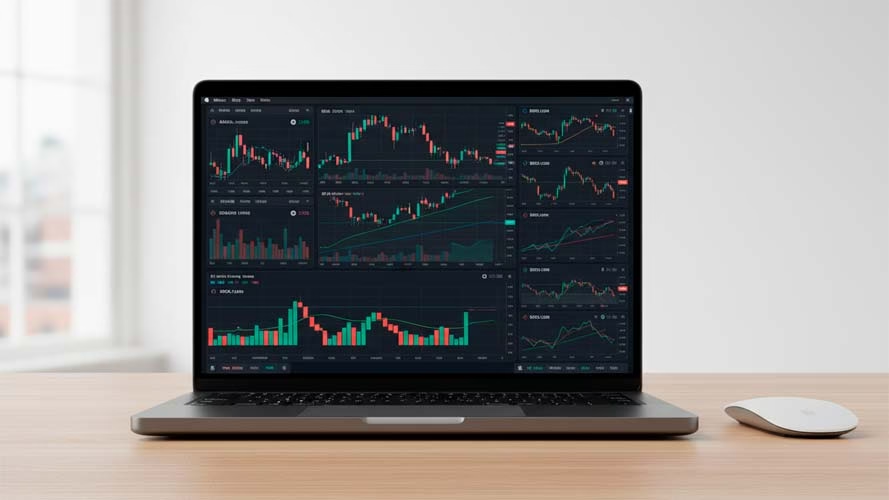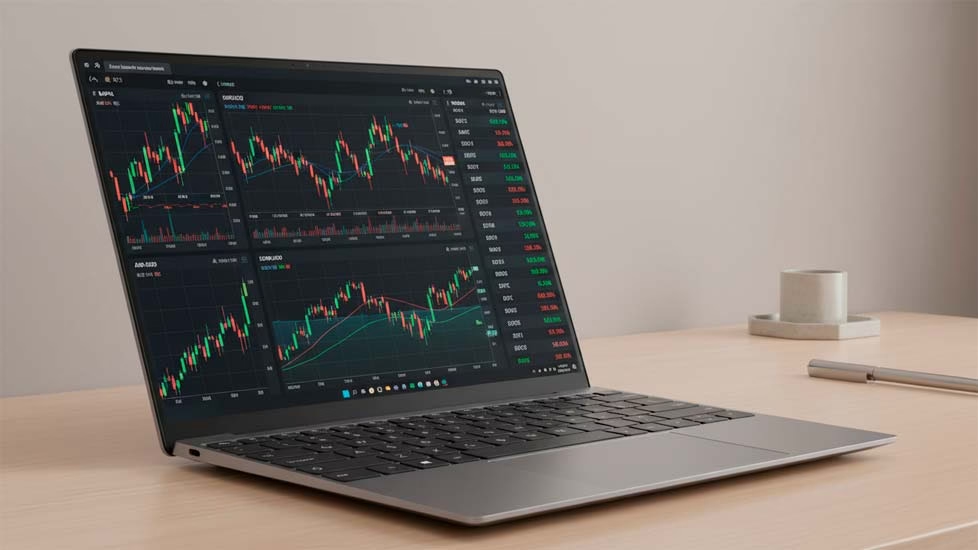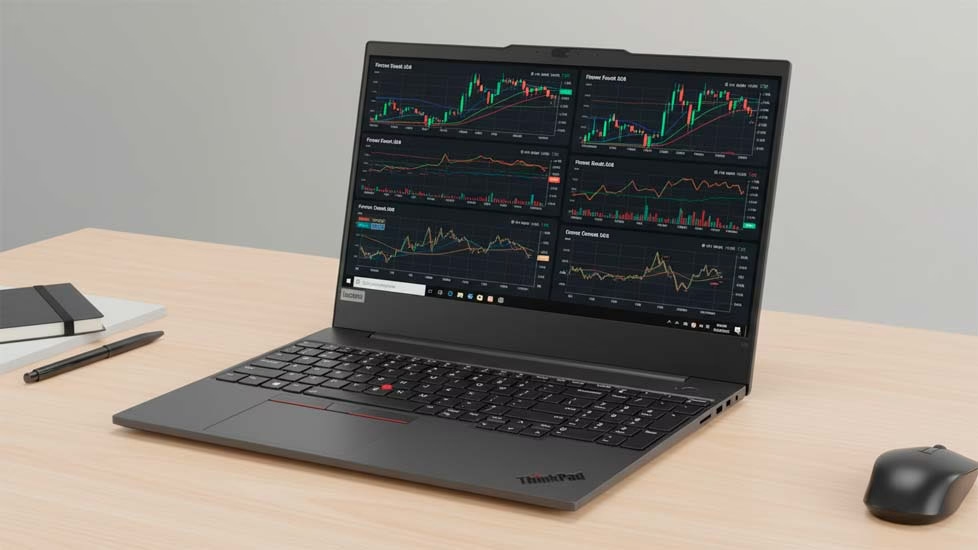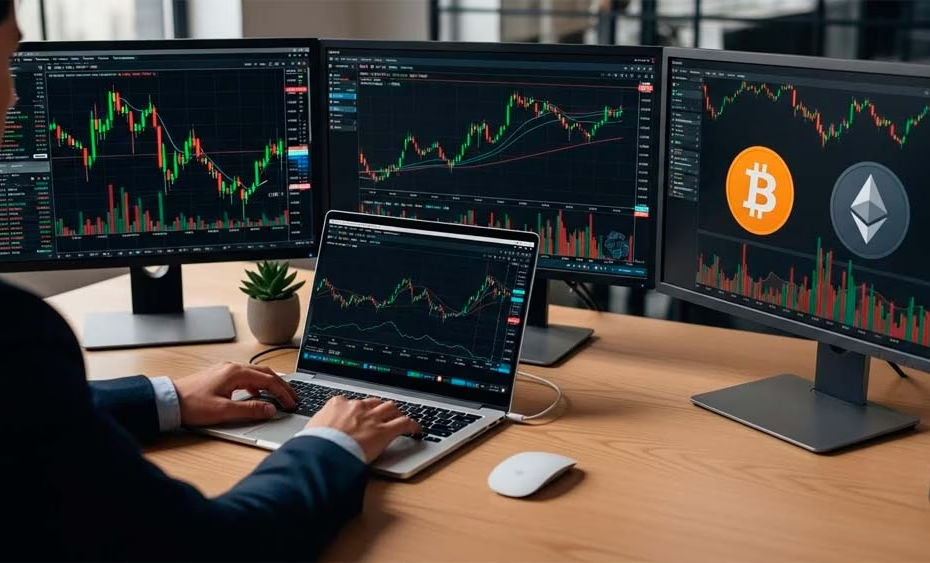Choosing the best laptops for trading is not a matter of aesthetics or brand loyalty. When you trade, your computer becomes part of your execution chain. Charts update in real time, orders depend on milliseconds, and a single freeze can turn a good setup into a bad fill. Whether you’re day trading stocks, running a forex trading laptop, or managing a laptop for crypto trading, performance and stability are not optional — they’re risk management.
If you’ve ever asked yourself which computer is best for trading, this guide is designed to answer that question with real-world criteria, not marketing fluff.
Why your trading laptop matters more than you think
Trading is not “just checking charts.” A typical session may include:
- One or two trading platforms (Thinkorswim, TradingView, MetaTrader, IBKR TWS)
- A live news feed
- A browser with 15–30 tabs
- Spreadsheets, journaling tools, and alerts
- Multiple external monitors
On underpowered machines, this workload causes lag, thermal throttling, or random slowdowns — often right when volatility spikes. A reliable laptop for day trading gives you consistency: the same responsiveness at the open as at the close.
If you plan to work with several screens, choosing a multi monitor laptop with the right ports is just as important as raw CPU power.
Minimum vs recommended specs for trading laptops
Here’s a practical baseline based on current platforms and workflows.
Processor (CPU)
- Minimum: Modern Intel Core Ultra, AMD Ryzen (latest gen), or Apple M-series
- Recommended: Higher-tier Core Ultra, Ryzen AI, or Apple M4 Pro
Trading loads are sustained, not bursty — stability matters more than benchmarks.
Memory (RAM)
- Minimum: 16 GB
- Recommended: 32 GB if you multitask heavily or use multiple platforms
This is the biggest quality-of-life upgrade for traders.
Storage
- Minimum: 512 GB NVMe SSD
- Recommended: 1 TB NVMe SSD for historical data, logs, and backups
Graphics
- Integrated graphics are fine for 1–2 external 4K monitors
- Dedicated GPU helps with 3–6 displays or high-refresh setups
Display & connectivity
- Internal screen: 14–16″, high brightness, good scaling
- External monitors: Thunderbolt 4/5 or HDMI 2.1
- Wi-Fi 6E/7 + Ethernet via USB-C dock for reliability
Ports, docks and multi-monitor trading setups
If you’re building a serious workstation, plan your display layout first.
- Thunderbolt 4/5 docks are the cleanest solution: one cable for power, Ethernet, and 2–3 monitors
- HDMI 2.1 is ideal for single 4K@120Hz panels
- DisplayLink docks can expand monitor count on supported systems
A stable multi monitor laptop setup reduces friction and lets you focus on execution instead of troubleshooting cables five minutes before the open.
Best overall laptop for trading
Apple MacBook Pro (M4 Pro / M4 Max)

For many traders, this is the most balanced and stable option available today. It delivers sustained performance with minimal fan noise, excellent battery life, and industry-leading displays.
With Thunderbolt support, it handles multi-monitor setups smoothly, making it one of the strongest contenders for the best laptop for trading overall.
Best for: stock trading, swing trading, TradingView-centric workflows
Consider Windows instead if: you rely heavily on MT4/MT5 or Windows-only tools
Best laptop for forex trading on the go
Dell XPS 13 / 14 (2025)

If portability matters, the XPS line hits the sweet spot. It’s light, powerful enough for multiple charts and news feeds, and pairs well with a Thunderbolt dock at home.
As a forex trading laptop, it works well for traders who travel or split time between locations without sacrificing performance.
Best laptop for crypto trading
Lenovo ThinkPad E16 Gen 3 / P-Series

Crypto traders often value uptime, thermals, and reliability over flashy design. ThinkPads deliver exactly that, along with excellent keyboards, strong port selection, and easy multi-monitor expansion.
They’re also well suited for running VPNs, security tools, and exchange dashboards simultaneously.
Best option for heavy multi-monitor setups (3–6 screens)
If your workflow involves scanners, order flow, options chains, and news across several displays, consider a system with a dedicated GPU.
- Falcon Trading Computers (custom-built for traders)
- MSI Stealth / GP series with RTX graphics
These machines are ideal if your laptop for day trading effectively replaces a desktop.
Budget trading laptops: what to prioritize
If you’re starting out or trading part-time:
- Under $1,000: Focus on 16 GB RAM and SSD upgrades
- Under $1,500: Look for better cooling and Thunderbolt support
Avoid saving money on RAM — it limits longevity more than CPU choice.
macOS vs Windows for trading
- macOS: Excellent battery life, thermals, displays, TradingView and TWS support
- Windows: Broader native platform compatibility (especially MetaTrader), more hardware options
The answer to which computer is best for trading often depends on the software you use daily.
Network stability: don’t ignore it
Even with Wi-Fi 6E or Wi-Fi 7, congestion happens. A small USB-C or Thunderbolt dock with Ethernet can save a trading session when wireless becomes unreliable.
Frequently asked questions
Do I need a dedicated GPU for trading?
Only if you run many external monitors or high refresh rates.
Is 8 GB RAM enough for a laptop for day trading?
No. 16 GB is the practical minimum in 2025.
Can I live off day trading?
A good laptop reduces technical risk, but profitability depends on skill, discipline, and capital — not hardware alone.
Final thoughts
The best laptops for trading are not about chasing specs — they’re about eliminating friction. When your tools are fast, quiet, and reliable, you free mental bandwidth for decision-making.
Treat your laptop as part of your trading infrastructure, not an accessory.
